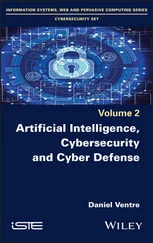An Intrusion Prevention System (IPS)is software or hardware that can both detect and prevent known threats. These systems can also just alert, depending on how their thresholds are configured. These systems continuously evolve, and in recent years, have advanced. Network access controls and firewalls are now available with this feature.
Firewallsinspect network traffic and block or allow traffic based upon rules. Available as hardware and software, these devices have highly evolved from their early days and can now read and inspect encrypted traffic. These Next‐Generation Firewalls (NGFW) can look deep into the data within the network traffic as it passes by, and can provide options to take action, stopping anything that meets its malicious criteria.
An IP addressis a string of numbers that identifies a unique computer or network. These unique numbers allow communications within private networks or over the internet. Think of an IP address as an address found on a mailed letter. As the email (or traffic) is passed along on the network, the provided IP address indicates where the email must go in order to get to the intended recipient. IP addresses have three numbers in four sets: 192.168.1.1 or 10.102.201.32 and billions of combinations.
Portsare physical or logical openings that allow connectivity for a specific program or application. An example of a physical port could be to plug in a mouse or a USB stick. On the logical side, an example is normal internet browsing that occurs over port 80. If you are connecting to a secure site, such as your bank, you would connect over port 443. These ports are there so that each side of the connection knows exactly which port to use when communicating. Similar to the IP address, a port enables the traffic to arrive at the intended computer or network; the port specifies which “room” to go to for the conversation.
A domain name server (DNS)is a system of computers that translate human‐friendly names ( www.rasner.com) to an IP address, simply because IP addresses can evolve and virtually no one wants to memorize one. Whenever a user types in a website address, a DNS server helps translate it into the correct IP address to ensure that the target resource (i.e., a website, database server, printer, etc.) is found.
Network access controlis a method used to restrict access to network resources by ensuring that devices (i.e., laptops, mobile devices, computers, servers, printers, etc.) comply with security policies. It is also known by its protocol name of 802.1x, and is viewed as an essential tool for limiting network access to those devices that meet security criteria and are allowed to connect to a network.
Out of band communicationsrefers to devices that are not the primary connectivity device. For example, many vendors will use a router or VPN concentrator as hardware devices to connect to a customer's network. Some will want to place a modem or an alternate device for connecting to that network if the router is offline. These devices can be problematic for connectivity as they are usually not connected to any monitoring or logging system; hence, they can be a used as a backdoor by hackers.
A shared responsibility modelfor cloud security is adhered to by Cloud Service Provider (CSPs) and refers to how different solutions shift the responsibility from the CSP to the customer. In a traditional data center owned by a company, that company is responsible for its technology's delivery. When deploying to the cloud, the level of responsibility increases for the customer as they shift from Infrastructure as a Service (IaaS) to Platform as a Service (PaaS). The IaaS model requires the customer to perform more of the security and maintenance than in the PaaS model.
Personally Identifiable Information (PII)is data that is used alone or with other data and enables a viewer to identify an individual. Thousands of combinations of information are possible that make up data PII, but typically it contains name, Social Security numbers, financial info, drivers' licenses, physical address, phone numbers, or more.
Personal Health Information (PHI)is PII that pertains to an individual's medical information, such as smoking status, any illnesses, medications, and other very confidential medical data. PHI is considered more sensitive than PII and as such, requires more security.
Data classificationis when data is analyzed and organized into categories based upon its sensitivity to the sorting organization. There are often three or four classes of data for most companies, but there should only be one category that is labeled as public and one labeled private or sensitive.
For the purposes of this book and how cybersecurity third‐party risk approaches this topic, the cloud is defined as any location not inside your own data center, server closet, or laptop hard drive (if you are a small‐business owner). The cloud could be located in a CSP, such as AWS, Google, or Azure, at a co‐location facility provider, or at a data center managed by the vendor directly.
Advanced Persistent Threat (APT)is considered a more superior threat actor because hackers use continuous, clandestine, and advanced techniques to gain access, remain stealthy for longer periods of time, and often leave undetected or with little evidence left behind for forensics. APTs are starting to utilize the supply chain cyber weaknesses.
The information security field has been around long enough for more than a few standards to be written. Security frameworks are a collection of government cybersecurity policies and guidelines, and best practices set in place protect information systems. They often have specific instructions for organizations to handle PII to lower the risk of a breach or damage. Dozens of them exist globally, but you must be aware of a few top useful ones to understand their scope and focus. Cybersecurity frameworks provide defined structures for people, process, and technology that a company uses as a reference to secure their networks, data, and systems from cyber threats. Some are regulatory guidance (e.g., New York Department of Financial Services [NYDFS] or the Health Insurance Portability and Accountability Act [HIPAA]), which provide a framework's structure. Some companies adopt a framework that is aligned with their industry (e.g., Control Objectives for Information and Related Technologies [COBIT] and Finance, or HIPPA and healthcare providers).
National Institute of Standards and Technology Cybersecurity Framework (NIST‐CSF)was created in response to the U.S. Presidential Executive Order 13636, whose purpose was to enhance the security of the country's critical infrastructure. While aimed at critical infrastructure such as power and water delivery, many private companies have adopted it. NIST‐CSF contains the following five functions that manage the risk to data and systems security: Identify, Protect, Detect, Respond, and Recover. This is shown in Figure 2.2.
The Identify function focuses on identifying physical and software assets as a basis for managing assets. It defines what an organization's supply chain risk management strategy is, according to its priorities, constraints, risk tolerance, and assumptions that support the risk‐based decisions managing their supply chain risks.
The Protect function provides security controls to ensure the security and integrity of an organization's infrastructure systems. Through identity and access management (IAM), an organization seeks to limit and contain any possible damage, thus protecting both its physical and logical access. A data protection program must be aligned with the organization's risk strategy and appetite, and its data protection must align with the cybersecurity core principles of Confidentiality, Integrity and Availability. Its goals are to defend the organization's resources with a patch and vulnerability management programs, and to assist the staff in safeguarding its data and assets with awareness and training in best practices on the safe handling of protected information.
Читать дальше



![Stephan Orth - Behind Putin's Curtain - Friendships and Misadventures Inside Russia [aka Couchsurfing in Russia]](/books/415210/stephan-orth-behind-putin-s-curtain-friendships-a-thumb.webp)








